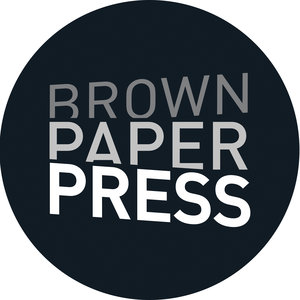In honor of Global Diversity Awareness Month in October, Brown Paper Press will be using our Instagram page to discuss the lack of diversity in publishing. To kick off the effort, intern Brenna Spalding dives into the challenges of seeing the demographics of our population reflected in the books we read.
If there’s one thing I’ve learned researching diversity in book publishing, it’s that this problem has lots of layers. At the surface, it may seem like book publishers just aren’t publishing enough books written by underrepresented groups. This is true, but for reasons hardly as simple as a blatant disregard for diversity. In fact, most — if not all — publishers agree that diversity in book publishing is a net positive. Yet, as Lee & Low Books revealed in a 2019 research study pertaining to diversity in book publishing, astonishingly little room for minorities has been carved out of the largely cis, white, straight, able-bodied tradition that is the book publishing industry.
The lack of diversity in publishing, particularly as it relates to publishing works by authors of color, is heavily critiqued in “Rethinking ‘Diversity’ in Publishing,” a UK study published in 2020 that investigates the reasons we are struggling to find author voices that truly reflect the diverse population of all who are literate. Two elements within the study’s findings stand out: “Assumptions about Audiences” and “Economic vs. Cultural Value.”
Time to retire ‘Susan’
Many assumptions are made about the “average” reader that simply do not reflect the reading population. “Rethinking” states that “publishers have a very narrow sense of their audience,” noting that books often are intended to sell to a white, middle-class older woman; this ideal, according to the report, is called “Susan.” If one assumes “Susan” truly is the standard reader, books reflecting minority groups may appear less appealing to publishers; but that’s quite a large assumption.
So, if not “Susan,” who does read books? The Bureau of Labor Statistics reported earlier this year that, in 2021, white people read for an average of 0.3 hours per day, while those who identify as Asian, Black or Hispanic read for an average of 0.28, 0.16 and 0.1 hours per day, respectively. If publishers were to allow even these brief snapshots into the realities of literacy to dictate their selection of published titles, we would theoretically see a generous amount of books catered to minority authors.
The problem is that there remain suspicions over whether racial and ethnic minorities read, according to “Rethinking.” The publishing industry is “set up essentially to cater to this one white reader.” This is as dangerous as it sounds.
Stories of ‘overcoming’
As the notion of diversity becomes increasingly relevant in our culture, publishers reach for diversified authorships. Yet, this trend, paired with their assumptions about audiences, tends to only leave space for stories by people of color in the narrative realm of overcoming.
Underrepresented authors are gaining attention in the publishing industry, but too often their stories require them to retell their traumas in order to claim space as authors. “Rethinking” notes, “Until the publishing industry diversifies its audience, writers of colour will always be ‘othered.’” This occurrence of “othering” raises another question: What kind of value do publishers truly place on diversity in storytelling?
Money talks
Publishers, both big and small, widely recognize that diversity is morally and culturally valuable. As “Rethinking’” notes, “In our interviews, respondents articulated strong moral/ethical and commercial cases for why the industry needs to publish more ‘diversely.’” Yet there is a difference in the value that diversity upholds when discussed from a cultural versus economic standpoint.
According to the report, “We are not convinced that publishers really believe in the economic value of diversity. Or more precisely, they are not convinced that their core audience is fully interested in books by writers of colour.” Their “core audience,” in many cases, being “Susan.” This belief is ultimately a roadblock to increasing the perceived economic value of books written by minority authors. If publishers expand their idea of audience, they will inherently see the industrial value in publishing and selling books from non-white voices.
One tangible way I can think to combat this silly, inherently racist notion is to simply read stories written by members of cultural minority groups. Then, if by no other means, large publishers might be financially inclined to unbox diverse authors from their “niches” that demand the retelling of race-related traumas and publish their stories without binds.
Brenna Spalding is a Cal State Long Beach graduate and an intern at Brown Paper Press.


